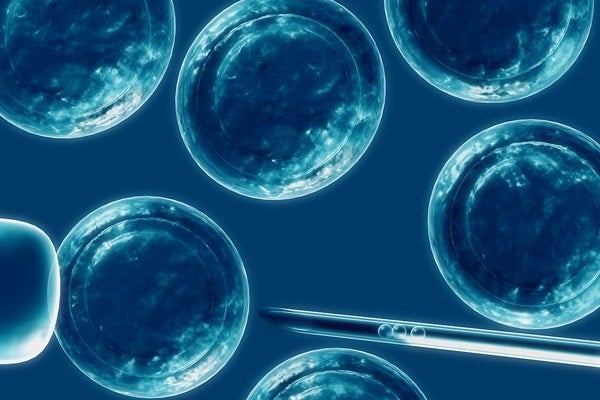
U of T researchers discover switch that controls stem cell development
Published: September 21, 2011
Scientists have found a control switch that regulates the way stem cells stem develop into any type of cell in the human body. Called pluripotency, this capacity is regulated by a single event in a process called alternative splicing, according to research by lead investigator Benjamin Blencowe and his colleagues.
Alternative splicing allows one gene to generate many different genetic messages and protein products. The researchers found that in genetic messages of a gene called FOXP1, the switch was active in embryonic stem cells but silent in “adult” cells—those that had become the specialized cells that comprise organs and perform functions.
“It opens the field to the fact that alternative splicing plays a really important role in stem cell pluripotency,” said Blencowe, a professor in the University of Toronto’s Departments of Molecular Genetics and Banting and Best Department of Medical Research. “We’re beginning to see an entirely new landscape of regulation, which will be crucial to our understanding of how to produce more effective pluripotent stem cells for therapeutic and research applications.”
The findings were published in the current online edition of the scientific journal Cell.
Alternative splicing works by allowing different segments of genetic messages, also known as messenger RNAs, to be spliced in different combinations as the messages are copied from a gene’s DNA. Those combinations make different messenger RNAs, which in turn become different proteins. In stem cells, scientists have shown that a core set of proteins called transcription factors control pluripotency.
The splicing event discovered by Blencowe’s team, including the study's first author Dr. Mathieu Gabut, changes the DNA binding properties of FOXP1 in a way that then controls the expression of the core pluripotency transcription factors, to facilitate maintenance of pluripotency.
“As a mechanism that controls those core transcription factors, it’s right at the heart of the regulatory process of pluripotency,” said Blencowe.
At the same time, the mechanism represses the genes required for differentiation—the process whereby by a stem cell loses “stemness” and becomes a specific cell type that makes up an organ or performs a function.
As well, in collaboration with colleagues including Professors Jeff Wrana and Andras Nagy of molecular genetics, researchers at Mt. Sinai Hospital's Samuel J. Lunenfeld Research Institute, the splicing switch identified by Blencowe’s team was shown to play a role in “reprogramming,” a potentially therapeutic technique in which researchers coax adult cells back into induced pluripotent stem cells by introducing the core transcription factors.
“That’s an important area in the field where we need better understanding because reprogramming, especially with human cells, is very inefficient,” said Blencowe. “Often when reprogrammed stem cells are not fully reprogrammed they become tumorigenic and can lead to cancer.”
Potential applications for stem-cell science include growing cells and tissues to test new drugs or to repair or replace damaged tissues in many diseases and conditions, including heart disease, diabetes, spinal cord injury and Alzheimer’s disease.
As well, a better understanding of the mechanisms that regulate pluripotency, cell division and differentiation will provide knowledge of how diseases like cancer arise and suggest more targeted therapeutic approaches.
Blencowe and his lab have recently turned their attention to what might be controlling the factors that control both alternative splicing and the maintenance of stem-cell pluripotency. They have, said Blencowe, a few tantalizing glimpses. “There’s still a lot to figure out, but I personally believe there is huge potential in the future. If we can fully understand the regulatory controls that allow us to make uniform populations of fully reprogrammed stem cells, there’s no reason why they shouldn’t be effective for many different therapies. It will come.”
Other co-authors on the study: Payman Samavarchi-Tehrani (Centre for Systems Biology, Samuel Lunenfeld Research Institute, and Dept. of Molecular Genetics, U of T); Xinchen Wang, Valentina Slobodeniuc, Dave O’Hanlon, Shaheynoor Talukder, Qun Pan, and Timothy Hughes (Banting and Best Dept. of Medical Research, U of T, and The Donnelly Centre for Cellular and Biomolecular Research, U of T); Hoon-Ki Sung and Knut Woltjen (Centre for Stem Cells and Tissue Engineering, SLRI); Manuel Alvarez (The Donnelly Centre, and the Institute of Biomaterials and Biomedical Engineering, U of T); Esteban Mazzoni, Stephane Nedelec and Hynek Wichterle (Columbia University Medical Center); Peter Zandstra (The Donnelly Centre and IBBE).



